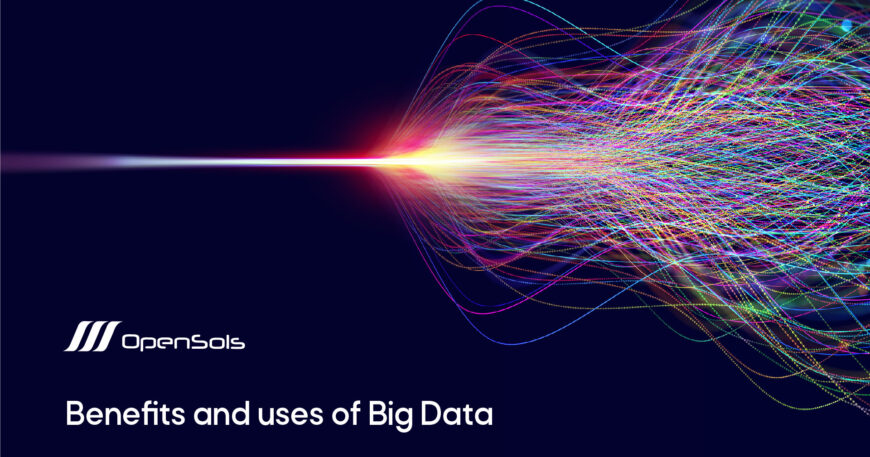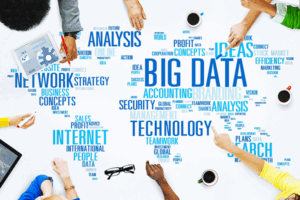Data is the new natural resource and a diamond in the rough for companies. The challenge for today’s organizations is to learn to turn data into information that allows them to decide based on facts. Companies are facing a growing generation of data in different formats, from multiple sources, and with increasing speed.
Big Data solves this problem and turns it into an opportunity to discover market trends, hidden business patterns, customer preferences, and correlations.
Some benefits of Big Data for companies are:
- Quickly find opportunities for improvement in areas of the company and minimize human error.
We can quantify the efficiency of internal services and the productivity of the areas related to corporate strategies by analyzing historical data versus data in real-time. We went from the traditional intuition based on experience to the analytical process based on measurable facts to minimize the risk derived from human error. “Without data, you are just another person with an opinion,” William Edwards Deming (1900-1993).
- Quickness in deciding assertively.
We can find behavior patterns and business variables with Big Data. For example, we realize how customers react to a social networking advertising stimulus, their habits after buying certain products, how a real-time marketing campaign behaves, or what internal impulses and emotions customers have when they use the company’s products.
Through external data, such as those mentioned in the previous paragraph, and the correlation with the variables taken from the company’s internal systems, we give managers and middle managers enough tools to combine their experience and intuition with data analytics to decide assertively.
- Better knowledge of customers.
Many times, a customer does not know what led him to buy some blue shoes, but the company that sold those shoes knows, because the said company has implemented Big Data analytics. The blue shoes are linked to the client’s personality and to what he comments on his social network, the interaction in contact center calls, and his purchasing habits with other companies. Knowing the tastes of our customers and the variables correlated to their purchases allows us to predict how and when they will purchase our products or services.
With a better knowledge of our customers, we can plan the inventory and acquisitions of new products or raw materials. In this way, we optimize the purchasing process from suppliers and create strategies focused on satisfying market preferences. With other behavioral patterns, we can also predict if a customer is thinking of leaving us and going to the competition.
- Cost reduction and optimization process.
One application of Big Data is to reduce unnecessary costs in the value chain by focusing on the processes with the greatest impact on the company’s profitability. Likewise, by using timely information, those processes with high costs and little profitability are reduced or eliminated.
With what-if analysis (what would happen if), we can simulate financial scenarios to combine them with analytical models based on machine learning to test hypotheses of business variables. Through this, we reduce the risks and costs of implementing initiatives, and we quickly realize the viability or not of an idea or new implementation.
For example, optimizing the planned flight route in the aeronautical sector is essential for fuel savings. According to IATA: “it was estimated, in 2019 that 188,000 million dollars were spent on fuel consumption in the global airline industry,” a two percent reduction in consumption would save 3,760 million dollars. With an implementation in Big Data, it was possible to correlate the planned route of the aircraft with the speed and direction of the tailwind at each coordinate of the aircraft’s trajectory. Based on this forecast, the flight routes were redefined to reduce fuel and the time of the aircraft in the air. It is estimated that an airline can save between 30 and 50 million dollars a year by optimizing fuel consumption.
All industries and sectors use Big Data. Some of them are:
– Energy sector and public services
Prediction of renewable energy production.
Data analysis for fault detection and preventive maintenance.
Prediction of energy consumption to manage demand and supply.
Detection of fraud in user consumption.
Definition of consumption patterns versus energy generation.
– Retail:
Big Data-based listening platforms analyze and filter social media data to search keywords or consumer sentiments towards the brand.
Visitor prediction for checkout optimization.
– Industry and manufacturing:
Inventory prediction to optimize the production process.
Machine performance monitoring, failure prediction, and preventive maintenance.
– ICTs:
Monitoring the performance and usability of the website.
Analysis of large volumes of data from digital marketing campaigns to predict the behavior of new products.
– Other sectors:
Advertising agencies use it to design more targeted and faster marketing campaigns.
Fashion designers use it to follow trends and create more innovative products.
Banks use trends to make more effective and profitable investments.
Currently, Big Data is in many operations of our lives, when we place an order with Rappi or use Waze, Spotify, Prime Videos, or Netflix.
When we ask for an Uber or when Amazon shows us the recommended products based on our preferences, technologies are being used within the Big Data ecosystem such as machine learning, artificial intelligence, in-memory databases, and one of the topics that we will discuss in a future article: Data Lakes.
Osorio, Carlos.“Benefits and uses of Big data.” Translated by OpenSols,(6 September 2020). https://opensols.com/benefits-and-uses-of-bigdata/






